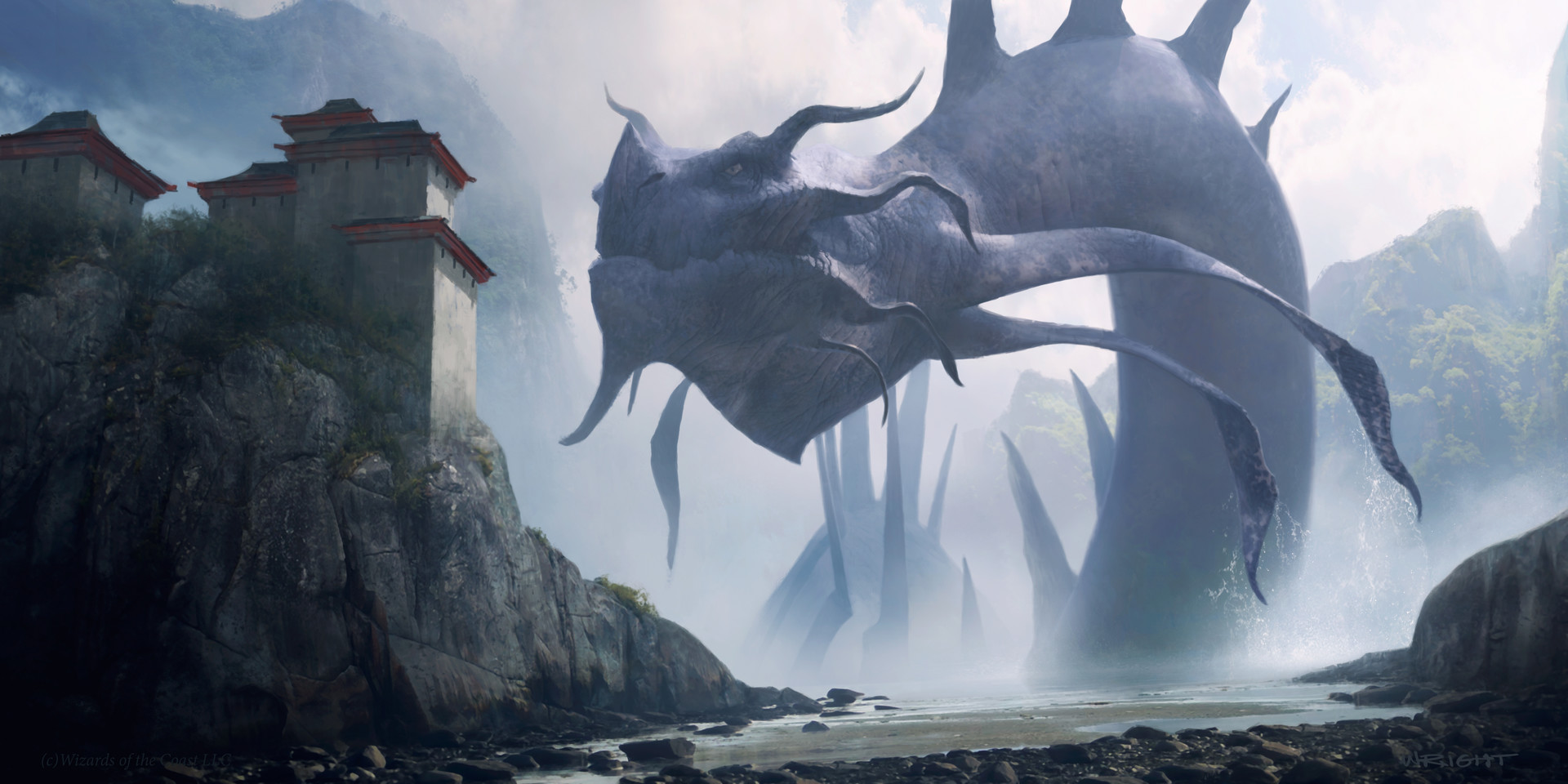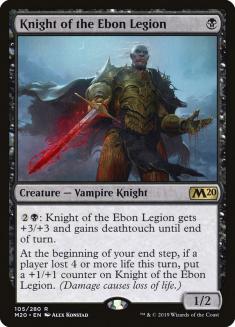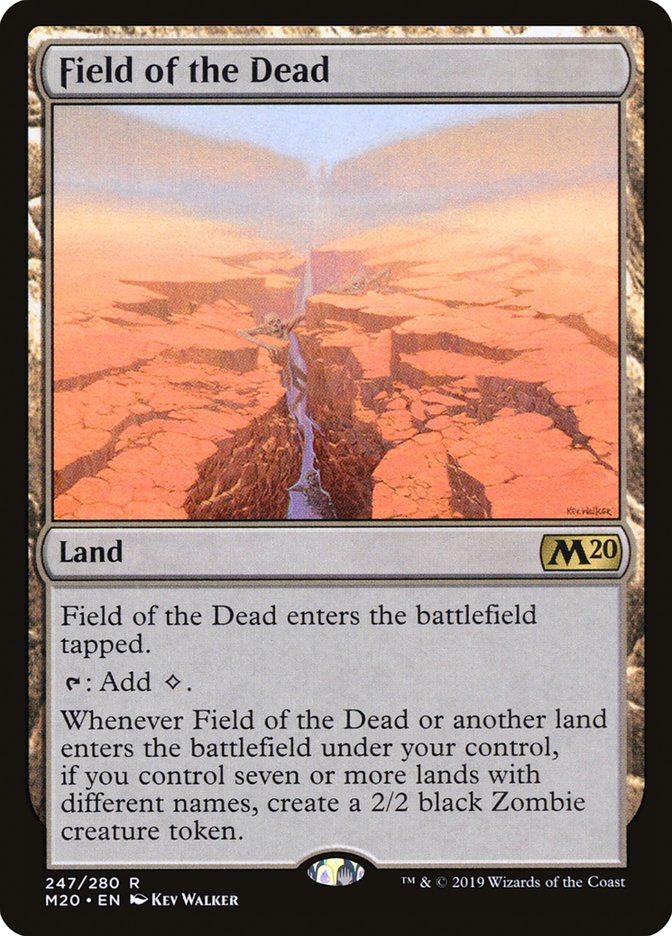Hello, and welcome to this week’s installment of Sullivan’s Satchel. I’m here hate-screaming the chorus of “Some Things Never Change” on loop trying to figure out which DNC speech has black-pilled me the most while reviewing some Magic files for Limited purposes. Having a normal one, as the kids call it. I think there’s some pressure against indulging these sorts of feelings and emotions but we’re all locked in our houses trying to manage as best as we can and I think you’ve gotta see these things through sometimes.
Magic-wise, I covered “new Standard” this past weekend and it seemed fine, a material improvement over the past format even if Sultai Ramp crowded out everything else. As usual, I sat in the “booth” wondering where the one-drop aggro was; black, red, and green all have plausible decks and were mostly absent from the event. These Sultai Ramp decks don’t even have sweepers in their sideboard. They spend a lot of turns doing nothing on the battlefield. Maybe I’m being overly optimistic but I think the metagame has room to mature. We’ll see I guess.
As usual, I picked from a mixture of good-faith questions from the readers plus specific questions I solicit from personal friends, and sprinkle it around to give the column the mixture of organic inquiry and name recognition on which it thrives. With that:
From Michael Majors:
In an ideal world, if you could predict power level outcomes perfectly, how would you distribute it amongst the sandbox in terms of floors, ceilings, and levels of investment? Further, what do you consider an interesting bar for an outcome on investment?
Michael is one of my favorites; I tried to poach him for Dire Wolf before Wizard of the Coast got their hands on him, and unfortunately our time working on Magic overlapped only shortly. But he’s great, and I’m glad he’s back in the SCG fold, and everyone should be on alert for when he’s able to play in events again.
So, to start answering the question, I would point to one of my favorite designs of the last few years, Knight of the Ebon Legion.
There’s so much good stuff going on here that it’s hard to unpack it all. It is both “immediate” (cheap, sometimes the end of turn triggers happens the turn you play it, can be an awesome blocker the turn it gets played with enough mana, etc.) and “investment” (can invest a variety of game actions to pump it up), and the “investment” can run away with the game (becomes The Abyss or just becomes lethal faster than most uncontested one-drops can) while also being “topple-able” (opponent draws a removal spell) that makes the game interesting to play (maybe you’re low, but you’re out from under it, compare it to peeling Hero’s Downfall against a Teferi, Hero of Dominaria that’s been on the battlefield for several turns). Separate to all that, it’s very much its own thing, in contrast to the relative similarity of a lot of constructed-level black one drops, and the pump ability is expensive enough to create dynamic moments and compelling incentives on both sides of the table.
I bring up this example because it highlights something I think is important about “immediacy” versus “investment” — things can exist on a continuum, and my favorite designs usually have elements of both. There’s nothing wrong with Elvish Visionary, but it isn’t the most dynamic game piece. There’s also nothing wrong with Jayemdae Tomb, but on the edges it renders some games boring and hopeless. Knight of the Ebon Order blends a lot of the best of both class of cards.
I think the bar for investment can be “you win the game” as long as it gets it over fairly quickly and there’s an interesting game leading up to the moment where the investment wins. In theory, planeswalkers do this; we battle it out and if you can keep yours on the battlefield for long enough you go ultimate and win (I know it’s sketchy calling a plansewalker “investment”, but you are usually down on your mana the turn it gets played relative to other constructed-worthy cards, so I’ll fudge it). The more troubling designs in this space, like Jayemdae Tomb, Search for Azcanta, or Teferi, Hero of Dominaria, give the controller very little incentive to get the game over with, so I think it’s good practice to make the piece “topple-able” such that if you draw an answer, the game is still interesting to play.
To the question of “floors” and “ceilings”, I think Knight of the Ebon Order is instructive as well. It’s hard for it to be “bad” (even though it is sometimes) because there’s enough raw rate baked in, but the situations where the (sometimes very high) ceiling emerge involve investment and risk (spending mana on the pump, playing other creatures, getting into combat, whatever). It’s powerful, but it’s powerful in a variety of ways in which both players get to exercise agency over the outcome, and that’s so much more fun and replayable then a bunch of cantrip creatures or Disrupting Scepters.
From @_PFFP
Question: Why is Field of the Dead so much more oppressive on formats like Standard, Pioneer and probably Historic, but no so much in formats like Legacy and Modern? What are Historic and Pioneer lacking to keep this land/strategy in check?
I do see Field of the Dead in older formats so it’s plainly got enough rate to hang in powerful settings, but you are correct that it seems more problematic in smaller card pools. I think much of it can be traced to the problems all sorts of expensive and/or investment cards find in powerful settings — you are at risk of just losing the game very quickly, which decreases the likelihood that any given game comes down to some battle of attrition in which Field excels, and also raises the opportunity cost of playing a colorless land that enters the battlefield tapped.
I think there’s still room for Field in powerful formats — it’s uncounterable, easy to search for, and pretty deterministic in the right settings. But it’s hard to get away from the stuff that underpins those formats, and that stuff is pretty hostile to cards like Field of the Dead.
From Mike Jarvis:
What part of paper Magic tournaments seems most distant to you after quarantining for so long? For me, it’s probably drafting. The idea of handling the same cards and passing them all back and forth with up to 7 strangers in a small circle seems so foreign to me.
Fighting through a throng of people trying to get to the pairings sheet at a Grand Prix was always absurd under previous circumstances and seems impossible to fathom now. The most distant part, in a good way? Trying to awkwardly hand a seething, recently-vanquished opponent the match slip and pen in a way that isn’t over disruptive to their clean up efforts, but prevents you from having to flag them down after they leave the table.
From MJsol55:
Id be curious your take on why legacy, modern, and even standard seem to be at a low, and at the same time other player focused formats like old school, premodern, and middle school are starting to pick up. Curious your opinions on why
I don’t think this is true. I mean, there’s probably more “cultural purchase” or whatever you want to call it for unsanctioned formats when tournament Magic is in a weird place, but those formats are also predicated on physical tournaments that are irresponsible right now. I don’t even know what two of those are. I’m guessing if you asked a random sampling of engaged Magic players, you’d get a similar response However, I’m slowly moving my collection into Old School stuff and I hope you’re right; I’d love for Denver to have a legit Old School scene if and when playing Magic all day at a bar becomes feasible again.
Lastly, our Question of the Week, and winner of $25 in store credit, from Brook Gardner-Durbin
Hi Patrick – big fan 🙂
I have several questions that are tied together for the satchel, about control deck wincons – Over the last several years, WotC has publicly stated they want control decks to exist, but to end the game relatively quickly after turning the corner. They didn’t like the UW decks that won with 1 Elixir of Immortality + time, Teferi, Hero of Dominaria tucking himself forever, etc. They also don’t want control mirrors to go forever. In an effort to make these games actually end, they have printed things like Pearl Lake Ancient, Nezahal, Chromium, Niv-Mizzet, Parun, and other ~uncounterable ~unkillable blue fatties. Do you like these existing? At this point, there have been so many cards that are approximately “5UU, win target control mirror, suspend 3” that they blur together – if you think they should continue to exist in some form, how would you like to see that problem handled?
Great question that actually elucidates some understanding of stuff that’s going on. Enjoy your $25.
I don’t think having one (or more, even) of these designs floating around in a given Standard format is harmful. It’s really rare that they do anything then their intended work (get these games over with, attack and block a little bit), and the work they do is good, so why not? That said, I think the sum of the designs you’ve mentioned are a little close to one another. Maybe that doesn’t matter too much; you only encounter the “sameness” after you’ve been playing Magic long enough to know multiple Standard formats, and even if they are similar they aren’t identical, nor are the cards that surround them.
I think there is space to explore designs that are similar but a bit more modest in cost, and a bit less inevitable in the spots where they are good. Something more like Air Elemental than Mahamoti Djinn, with whatever blend of Hexproof/Uncounterable/Flash/Sick Hit Trigger/etc.
Something those designs share is that they are good at getting the game over with even if the other player has the exact same card, which is an important dimension for a card that’s likely to show up in mirrors. Only so many recipes available if that’s a goal along with everything else.




